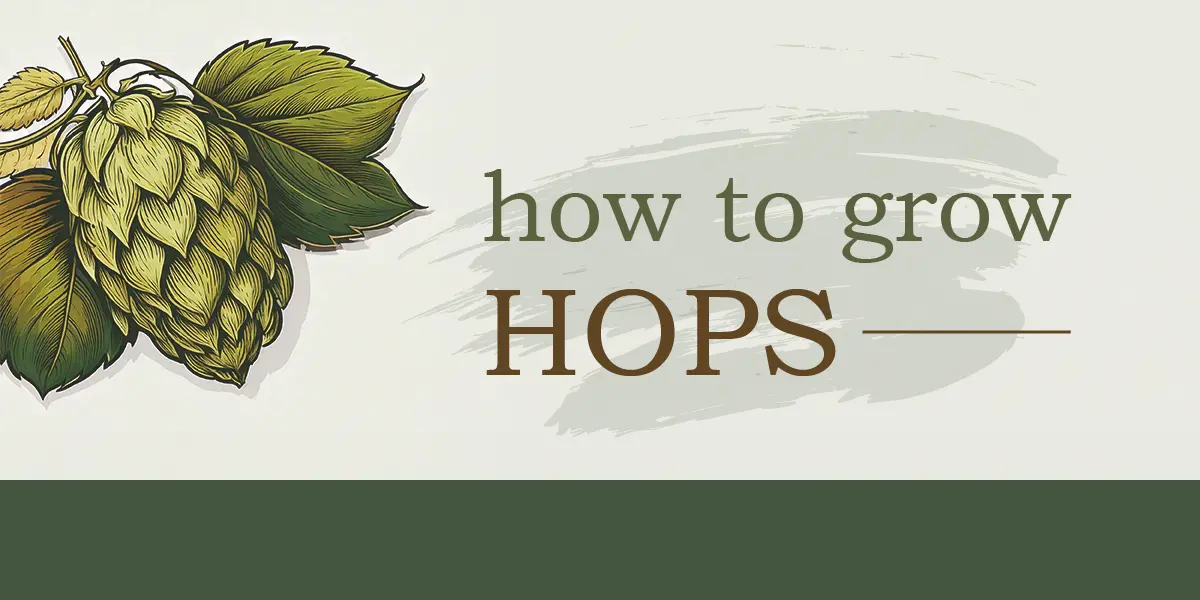Do you take your home brewing seriously? REALLY seriously? Then why buy your hops in a bag when you can pick them fresh off the vine?
The hop plant (Humulus lupulus) is a climbing vine that can reach up to 20 feet tall in a single growing season. Its cone-like flowers are an essential ingredient in beer, adding bitter, aromatic notes and helping to preserve the brew.
Hops are perennials and typically need a dormancy period with cold temperatures. Some varieties struggle without this chill.
Still, growing hops in some areas of Southern California is entirely possible, especially if you choose a heat-tolerant variety.
Fun fact: Brewers in what is now modern-day Germany were the first to cultivate hops for beer, starting around the 8th century. Does this surprise anyone?
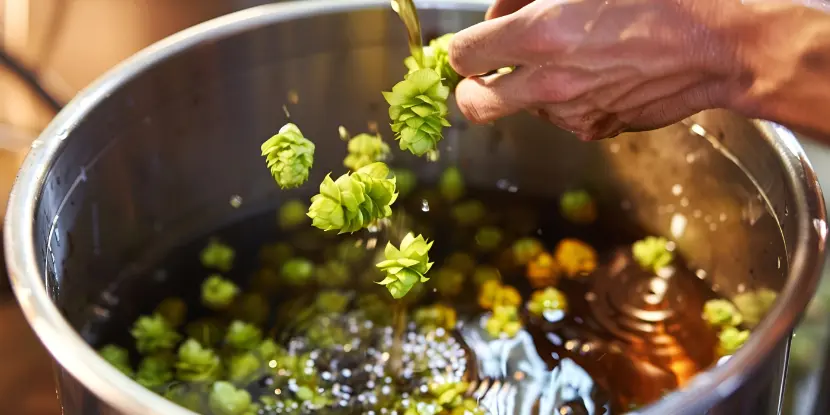
A home brewer tosses hops in the pot.
Best Heat-Tolerant Varieties
- Cascade hops have a citrus-forward aroma and flavor. They’re tough, adaptable, perfect for warm climates, and highly popular among craft brewers.
- Nugget hops are a high-alpha-acid variety that contributes bitterness to beer. These plants grow vigorously, even in areas with intense summer heat.
- Chinook features piney, citrusy notes. It’s flavorful and heat-tolerant — a good choice if you want to experiment with your IPAs or pale ales.
- Willamette hops are known for their floral, mildly spicy character. They handle heat well and will add character to porters or stouts.
Optimal Growing Conditions
Light
- Hops are photoperiod sensitive. Their growth and development are affected by the length of daylight hours.
- They require at least 6 to 8 hours of direct sunlight daily and should be planted in a location with full sun exposure.
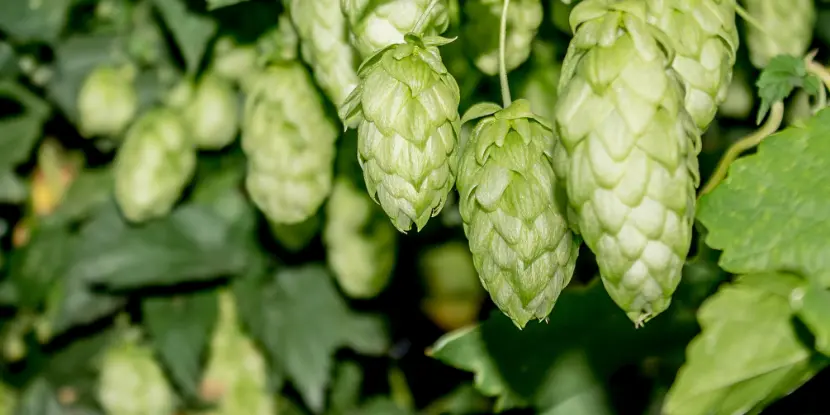
Give your hops plants at least 6 to 8 hours of direct sunlight daily.
Soil
- Select an area with well-draining soil and a pH between 6.0 and 7.5.
- A loamy or sandy soil with good drainage is ideal.
- Adding organic matter like compost can improve the soil quality and provide the nutrients for hop growth.
Temperature
- Hops thrive in cooler climates and can tolerate temperatures as low as 6°C (42°F) in the spring.
- During the growing season, hops prefer average temperatures between 15°C (59°F) to 21°C (70°F).
- Extreme heat can hamper hop growth and production. Provide some shade during hot summer days.
Propagating Hops
Hops are commonly propagated with rhizomes, small pieces of root taken from a mature hop plant. You can purchase rhizomes in early spring from homebrew stores or online retailers.
Choose healthy, firm rhizomes with visible buds. Each rhizome will sprout bines that grow into hop plants.
Steps for Planting Hops
- Till the soil to loosen it and mix in compost or manure for added fertility.
- Dig holes about 4 inches deep and 3 feet apart if planting multiple rhizomes.
- Place each rhizome horizontally, with the buds facing upward. Cover lightly with soil.
- Hops are climbers that need a support system. Use a sturdy trellis, fence, or string to grow the bines upward.
- After planting, water the rhizomes deeply.
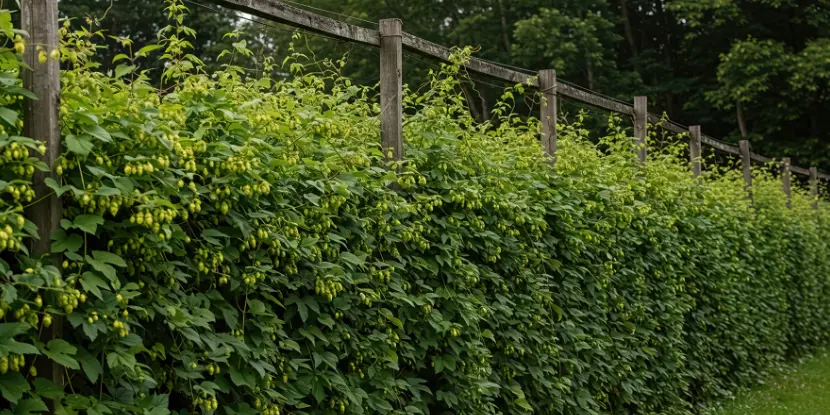
Hops grow upwards and so will need a trellis or other support.
Hops Plant Care
Water
- Hops love water, especially during their first year.
- Deep watering (1-2 inches per week) ensures the roots grow strong and deep.
- Drip irrigation is the best option to minimize water waste.
Fertilizer
- Apply a balanced fertilizer (e.g., 16-16-16) in spring.
- Switch to a low-nitrogen blend during bloom to encourage cone development.
- Organic options like compost tea also work well.
Pests & Diseases
- Common pests include aphids, spider mites, and Japanese beetles.
- Use insecticidal soap or neem oil to control infestations.
- Watch for powdery mildew and downy mildew. Treat with a fungicide if necessary.
- Proper spacing and air circulation can reduce exposure to diseases.
Pruning
- Prune in late winter to remove dead or damaged branches.
- Thin the canopy to allow for better air circulation and light penetration.
- Remove any suckers growing from the base of the plant.
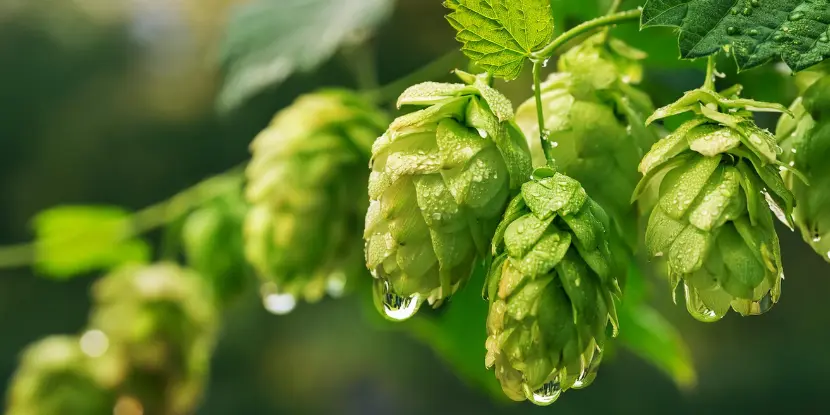
Mature hops flowers ready for harvest.
Harvesting & Storage
- Hops are ready for harvesting when they feel papery and have a distinct aroma.
- Pick hops off the bine, taking care not to damage the cone.
- Use fresh hops immediately, or store them in an airtight container in the refrigerator for a few days.
- For longer storage, freeze or dry them by spreading them on a screen in a well-ventilated area until they feel brittle.
Additional Tips
- Wear gloves when harvesting hops. The plant can sometimes irritate the skin.
- When drying hops, ensure they aren’t exposed to direct sunlight, which can degrade their quality.
- Properly dried and stored hops should retain their aroma and bitterness for up to a year.
- If you plan to use frozen or dried hops in your brew, compensate for their reduced potency by adding more than the recommended amount.
More Uses for Hops
Hops aren’t just for beer! Here are some other ways to utilize this versatile plant:
- Culinary: Add hops to dishes for a unique, bitter flavor. They pair well with meats, cheeses, and even desserts.
- Medicinal: Hops have been used for centuries to promote relaxation and sleep. A hop tea or tincture can help with insomnia or anxiety.
- Aromatherapy: Hops’ essential oils have a calming effect. For a relaxing spa experience, you can also make your own hop-infused candles, soaps, or bath bombs.
- Pest control: Hops are a natural insect repellent, making them a useful companion plant. Grow them around the perimeter or use an organic hop oil spray on plants.
- Soil amendment: After harvesting, you can shred spent hop vines and add them to your compost pile to replenish the soil with nutrients.
- Natural dye: Boil hops and use the resulting liquid to create a soft yellow-green color in fabrics.
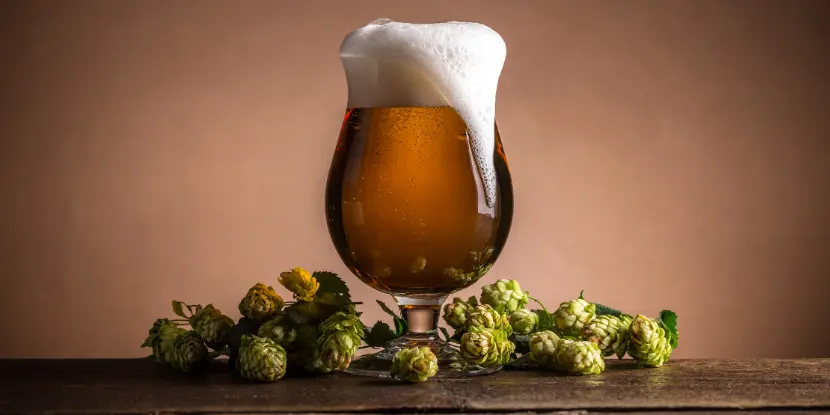
A delicious craft beer — the ultimate goal of your hops adventure.
FAQs: Growing Hops
Q: How long does it take for hops to grow?
Hops grow fast. You’ll see bines climb within weeks of planting, and cones are typically ready for harvest in late summer.
Q: Do I need a large space to grow hops?
Not necessarily. A backyard, a fence, or even a patio container with a trellis can work for growing hops.
Q: Can I grow hops indoors?
Hops sunlight and space to climb. However, some growers have had success using large grow lights indoors.
Q: Are hops toxic to pets?
Hops can be harmful, particularly to dogs. Grow your hops in a pet-free zone.
Q: Do hops plants attract bees?
Hops flowers attract beneficial pollinators like bees. This can be a boon for your garden!
Can I use fresh hops in brewing without drying them?
Yes, but fresh hops have a short shelf life, so use them immediately after harvest for “wet hop” beers.
Q: How tall will my hops grow?
Hops can grow up to 20–25 feet tall in one season, so make sure your trellis system is sturdy enough to support them.
Q: Do hops require a lot of maintenance?
Hops are relatively low-maintenance once established, but need proper trellising, watering, and occasional pruning.

